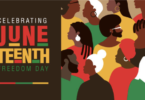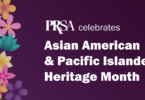Editor’s note: In celebration of Black History Month in February, PRSA invited leaders in the public relations profession to offer their views on diversity and inclusion and their ideas for achieving greater diversity in the industry.
One summer, I was a visiting professor at a well-respected, hip, and award-winning advertising agency in New York City. My rotation with executives and teams was great until the day I met her. The memory of the experience is faded and fuzzy, but her sharp tone, derisive comments about my university and training remain vividly sharp.
She was an older, white woman whose role was to craft client strategies. As I sat down to speak with her in her office decorated in sparse colors, art books with classical music in the background, she asked me questions about my work and research before hitting me with a stunning statement. “Oh,” she said after hearing the name of my university and where it was located. “I would never hire students from there. I find that liberal arts students from Harvard and Princeton are better critical and creative thinkers in this industry.” She proceeded to tell me why she valued students from ivy-covered, long-established universities over students from state schools (students like me and my students). I bit my tongue until I tasted the coppery taste of blood and could not wait until I could exit the office.
Every time I passed her office, she was holding court with her anointed heirs. Like all those who practice homosocial reproduction, they were all white, young white women who had degrees from universities with expensive price tags, ivy-covered brick walls, and Northeast addresses.
I always wonder how the woman I met in that NYC agency arrived at her decision. Why did she feel that way? Did she have proof that students from other universities were subpar? The questions pummeled my brain from that point on that clear, sunny day to today. Those questions popped up again when I watched this TED Talk on hiring. What struck me was my own implicit bias toward the striver or as the speaker states “the scrapper.” I will always root for the gritty, determined “scrapper” without the refined, perfect resume but has yards of perseverance, energy, creative hustle, and enthusiasm. I see myself in those students, many of whom do not look like me but they have the same drive.
I was just like the woman in that ad agency office. I had partiality and prejudice toward certain types of people. Yet, there was one spectacular difference between the two of us. I did not have the power to hire anyone into the industry. She did. She held the keys to the advertising kingdom, and she was a gatekeeper that could usher young graduates into those venerable walls that I only breached because I was a faculty member in a special program.
In the industry, we make a lot of noise around diversity at certain times of the year. This month—February and Black History Month—is one of those times. For all the squawking and chattering about identifying and retaining diverse candidates, there is very little talk about the cognitive biases that influence who gets into the candidate pool and who is able to get the job. Talk is easy. Talk is convenient. Talk is politically correct. Addressing the implicit biases and hidden preferences of hiring managers is difficult. Admitting that you have these biases is a charged conversation. As the University of Oregon’s HR website notes, we all have implicit biases.
Even more difficult is finding ways to lessen or rid organizations of those blinders. This Fast Company article outlines steps that can be taken to change unconscious bias in the workplace.
Admitting and correcting the implicit biases in hiring isn’t a feel-good, talky metric that wins applause and awards. It is a solid strategy that can correct some diversity issues within the industry. It will take hard work that will require digging into the research literature and consulting with people who work in this area. It will take effort beyond the diversity workshops. It will lead to uncomfortable conversations, refreshing silences, and difficult reflexive moments, and the rewards are not the quick wins that come with a diversity ad or a thought leader blog post. As someone once told me, “The tongue in your mouth has to align with the tongues in your shoes.” You have to walk your talk. Fixing the pipeline issues won’t happen without wrestling with the biases held by those who hold the doors of opportunity and talking about the experience.
Now isn’t the time for more trivial platitudes and banal chatter. Now is the time for action and movement.
Natalie T. J. Tindall, Ph.D., APR is an associate professor in the Department of Communication at Georgia State University. She is the immediate past chair of the Public Relations Society of America Diversity Committee, a member of the Public Relations Society of America Work, Life & Gender Task Force, and the 2013-2014 Head of the Public Relations Division of the Association for Education in Journalism and Mass Communication.








[…] PRSAY blog post on diversity and implicit bias in the PR and ad world is up today. Go check it out and leave […]